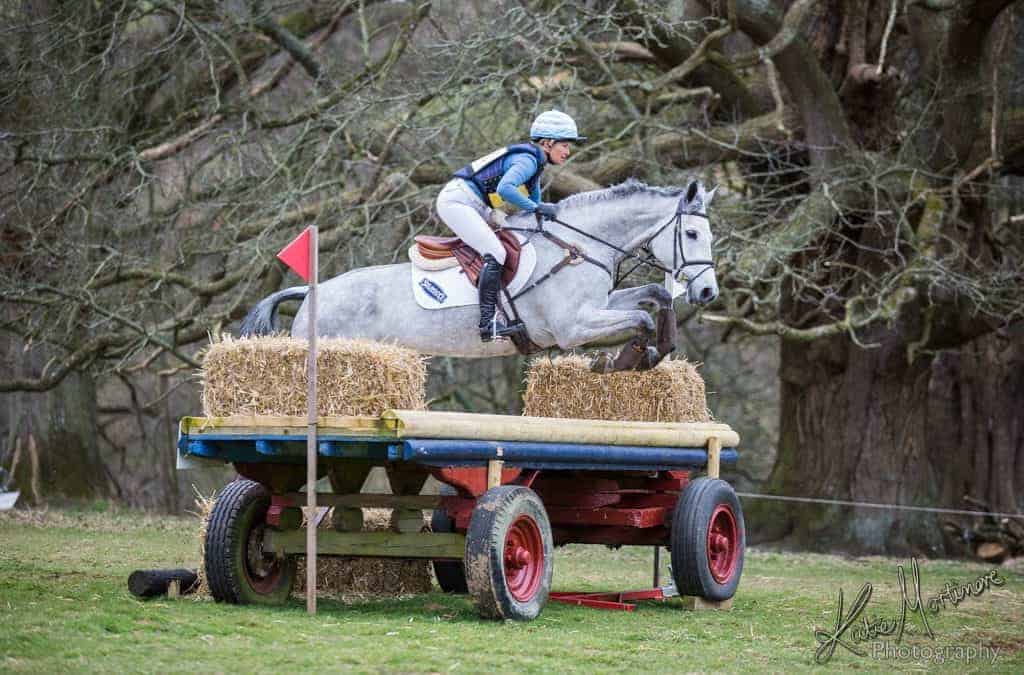I regularly read complaints from riders that the pro photographer at an event chose the smallest/most boring/”insert similar complaint here” fence so I thought I would take the opportunity to explain why.
There are a LOT of considerations by the photographer as to which fence(s) to photograph and these are just a few of them;

This fence at Badminton is always photographed due to the house but otherwise would be a poor choice as the light faces right at camera for the majority of the day.
Lighting – where is the sun both now and throughout the duration of the class. There is no point shooting into the sun the majority of the time although sometimes is it unavoidable if the class runs the entire day. The photographer will try not to change fence midway through a class as they will want to offer the same ‘set’ of photographs to all competitors in a class. You can guarantee if the photographer moved mid class to offer the best technical photo they will miss horses (which will garner complaints) and riders will want the shot of the other fence not the one they have (more complaints!)
Position on course and overall course technicality – Is it a technical course that might result in a number of eliminations? If so a fence early in the course will result in more combinations being photographed rather than a fence later on. This is especially true at unaffiliated events where the standard can vary widely.

This fence at Hambleden often results in a green jump for a lot of horses due to the white rope, so despite including bluebells would not be a fence of choice. It also is quite plain behind so again wouldn’t be a first choice.
Fence technicality – is the fence likely to cause stops? If so it most likely won’t photograph well. Yes 10% of competitors may jump it amazingly but that dramatically reduces the potential sales.
Room to photograph safely – no matter how impressive the fence if there is no room to safely position a photographer sitting down (they cannot be expected to stand from 9am to 6pm!) at the right angle then it cannot be photographed.
Likelihood of causing a distraction – if the positioning of the photographer is likely to spook a horse it is not worth photographing the fence due to the potential for complaints from riders.

This wagon has a lovely clean background and normally jumps well so was the fence of choice for the pro.
Type of fence – different fences are jumped differently producing different parabolas from the horses and expressions from the riders. The photographer will choose fences that most of the time produce a round and therefore more pleasing shape from the horse and a tidier jump from the rider. Riders rarely buy photos where they or their horse look untidy or uncomfortable.
How the fence looks on the landing side/side on. The photographer doesn’t photograph the take off they photograph the rear and or side so it needs to look atheistically pleasing.
How many photographers – if there are 2 or even 3 photographers covering the xc then there will often be one safe fence and then something more adventurous. If only one on course they will likely choose a safe fence to maximise sales.
Background – there may be the most amazing fence but if the background is cluttered then it will rarely be chosen. Portaloos are the bane of the event photographer’s life as they stand out like a sore thumb and ruin many a photo.

This BE100 fence at Hambleden rightly bucks the previous year rule as it produces great photos that riders love due to the impressive drop.
Previous years – if a photographer covers the same event every year and the course rarely changes they will attempt not to photograph the same fences each time unless a stand out fence (Withington drop tables anyone!!).


